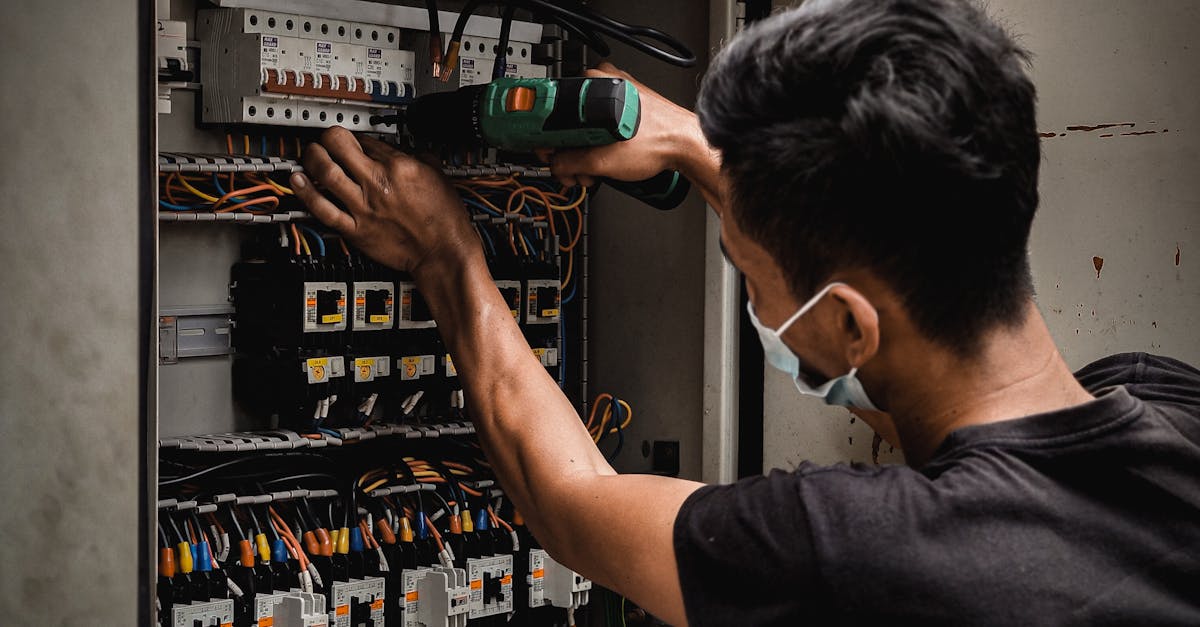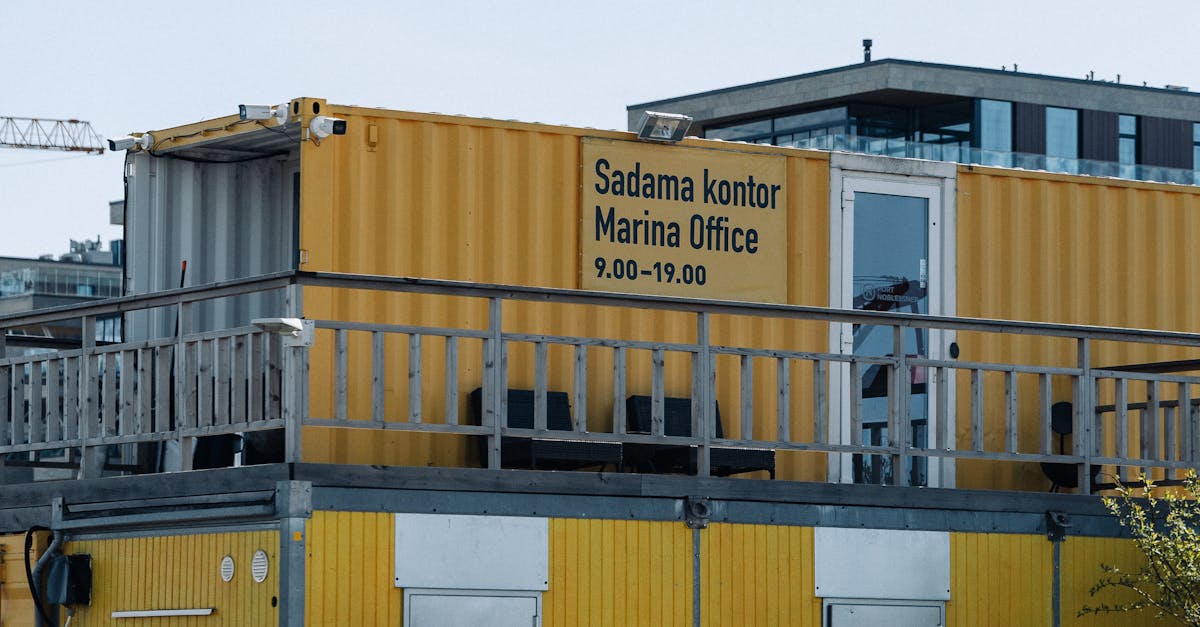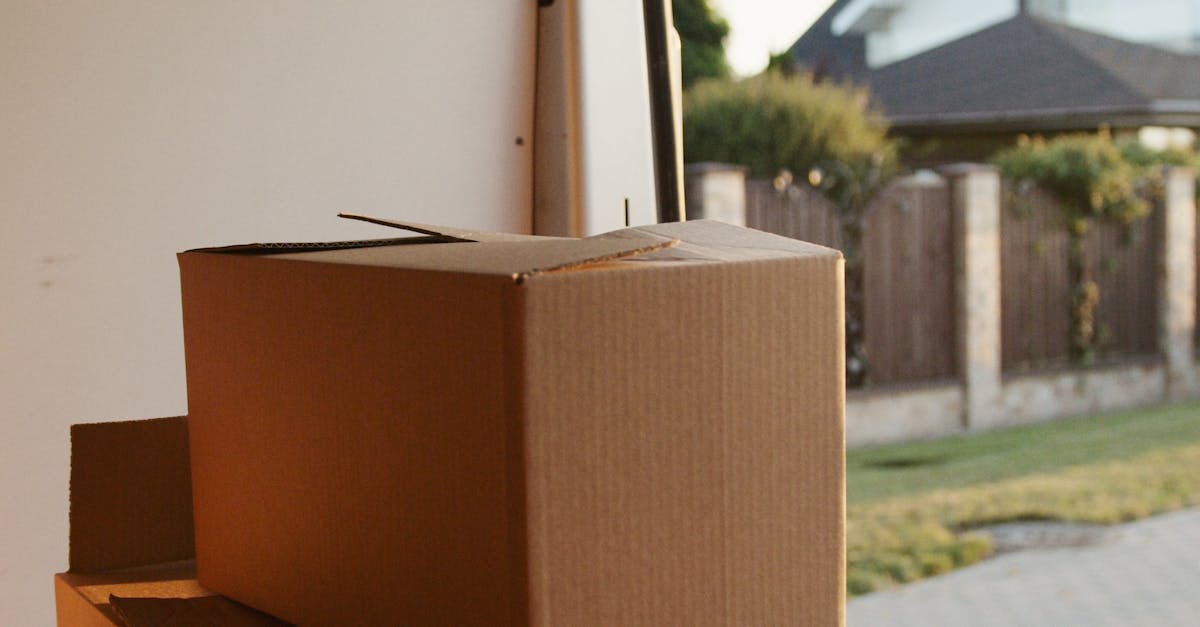commercial electrician brisbane

Navigating the Challenges of Transitioning to Renewable Energy Systems
The evolution of renewable energy systems has been significantly influenced by cutting-edge technologies. Innovations in solar panel efficiency and wind turbine design have transformed the landscape of energy generation. Advanced materials and engine...
Read more →
How Green Certifications are Shaping the Commercial Electrical Sector
Numerous organisations have successfully adopted green certifications, demonstrating significant benefits in performance and efficiency. One notable example is a large commercial office building in Sydney, which achieved a Green Star rating through a...
Read more →
The Impact of Battery Storage Technologies on Brisbane's Commercial Electricity Usage
Several businesses in Brisbane have successfully integrated battery systems into their operations, demonstrating the potential for enhanced energy efficiency and cost savings. One notable example is a local supermarket that installed a commercial-sca...
Read more →
Case Studies: Successful Implementation of Renewable Energy in Brisbane Commercial Properties
Queensland has established a comprehensive regulatory framework to support the growth of renewable energy. This framework includes various policies designed to promote clean energy initiatives and streamline the integration of renewable sources into ...
Read more →
Innovative Renewable Solutions for Commercial Property Management
In urban environments, green roofs provide significant benefits beyond their aesthetic appeal. They act as natural insulators, reducing the need for heating and cooling in buildings. This helps lower energy costs while promoting biodiversity by servi...
Read more →
Assessing the Financial Benefits of Renewable Energy for Businesses in Brisbane
Businesses in Brisbane looking to invest in renewable energy projects can explore various financing options tailored to their needs. One common approach involves leveraging government incentives and grants designed to promote sustainability. Addition...
Read more →
The Influence of Federal Policy on Renewable Energy Adoption in Brisbane
The Australian federal government has increasingly recognised the role of renewable energy in addressing climate change and enhancing energy security. Various funding initiatives have been established to support this transition, offering financial as...
Read more →
The Future of Wind Energy Applications for Commercial Electrical Systems
Wind energy stands out as one of the cleanest forms of renewable energy. The harnessing of wind to generate electricity contributes significantly to the reduction of greenhouse gas emissions, helping to mitigate climate change. By providing an altern...
Read more →
The Role of Solar Energy in Transforming Brisbane's Commercial Electrical Landscape
Innovations in solar technology have significantly improved both efficiency and accessibility for commercial applications. Advanced photovoltaic materials, such as perovskite cells, show promise in enhancing energy conversion rates beyond traditional...
Read more →
Integrating Renewable Resources into Existing Electrical Infrastructure
The evolution of electrical grids has led to the adoption of smart grid technologies, which enhance the reliability and efficiency of power distribution. These systems leverage advanced communications and monitoring tools, allowing for real-time data...
Read more →
Implications of Updated Legislation for Electrical Design Practices
The evolving landscape of electrical design necessitates a robust framework for training and certification. This framework must align with updated legislation, ensuring that professionals possess the requisite knowledge and skills to navigate new req...
Read more →
Analysis of Recent Case Studies on Regulatory Compliance Failures
The examination of recent case studies highlights the significant failures in regulatory compliance across various sectors. In the banking sector, issues often stem from inadequate risk assessment processes, leading to notable financial penalties and...
Read more →
The Role of Technology in Adapting to Regulatory Changes
Modern businesses must navigate a complex landscape of regulations that can vary significantly from industry to industry. Integrating compliance software streamlines this process, making it easier to track and manage compliance requirements. Such sof...
Read more →
Essential Knowledge of New Safety Requirements for Electrical Installations
Failure to adhere to safety standards in electrical installations can lead to severe consequences. Non-compliance not only jeopardises the safety of individuals but may also create hazardous conditions in workplaces and homes. Risks such as electrica...
Read more →
Navigating Compliance Challenges with Evolving Electrical Regulations
Building a robust relationship with regulatory bodies is essential for businesses navigating the complexities of electrical regulations. Regular engagement with these entities fosters an open dialogue that can clarify expectations and streamline comp...
Read more →
Key Updates to AS/NZS Standards Affecting Commercial Electricians
The AS/NZS 3500 series has implemented significant changes that directly influence water services across Australia and New Zealand. These updates aim to enhance the safety, reliability, and sustainability of plumbing installations. New requirements a...
Read more →
How Shifts in Legislation are Shaping the Electrical Industry in Brisbane
National energy policies have a significant impact on the electrical industry in Brisbane, affecting everything from pricing to availability. The federal government's initiatives often set the framework within which local markets operate. Decisions m...
Read more →
Understanding the Impact of New Wiring Codes on Commercial Practices
The introduction of new wiring codes necessitates an updated approach to training for industry professionals. Ongoing education becomes crucial as these codes often come with enhanced safety standards and technical specifications. Training programmes...
Read more →
The Future of Compliance: Anticipating Changes in Electrical Standards
A variety of industry stakeholders play a crucial role in shaping electrical standards. Manufacturers, contractors, and certification bodies contribute insights based on their unique experiences and challenges. Their collective input drives the devel...
Read more →
Recent Amendments to Electrical Regulations in Queensland
The recent amendments to electrical regulations aim to enhance environmental sustainability across Queensland. These updates reflect a commitment to reducing carbon footprints and conserving natural resources. Stricter guidelines now mandate the adop...
Read more →
Adapting Building Occupational Health Standards with Automation
Integrating automation into occupational health practices has transformed the way industries operate. For instance, a manufacturing company in Melbourne implemented an automated health monitoring system that tracks worker vitals in real time. This sy...
Read more →
Innovations in Lighting Control Systems for Modern Workspaces
The rise of mobile applications has transformed the way users interact with lighting systems in various environments. With just a few taps on a smartphone, employees can adjust lighting settings to match their preferences or needs. This convenience e...
Read more →
Enhancing Energy Management Through Automation Solutions
Automation technologies offer a pathway for improving energy management within established systems. By leveraging advanced sensors and software, organisations can enhance their ability to monitor and control energy consumption effectively. Integratio...
Read more →
Enhancing Security with Smart Automation Features
Personalising security alerts and notifications can significantly enhance the efficacy of a smart security system. Users can tailor settings to receive real-time alerts that align with their priorities. For instance, some may prefer instant notificat...
Read more →
Future-Proofing Buildings with Smart Technology
Data analytics plays a critical role in the operation and management of smart buildings. By collecting and analysing data from various sources, facilities managers can monitor energy usage, track occupancy patterns, and identify maintenance needs. Th...
Read more →
Optimising HVAC Systems with Smart Automation Technologies
Data analysis plays a crucial role in enhancing the efficiency of HVAC systems. By collecting and evaluating data from various sources, including sensors and user feedback, organisations can identify patterns in energy usage and system performance. T...
Read more →
Data-Driven Decision Making in Building Management
Creating a data-driven culture begins with leadership commitment. Management must model data-centric decision-making and foster an environment that values evidence over intuition. It is essential to encourage open communication where employees feel c...
Read more →
The Role of Mobile Apps in Smart Building Control Systems
Mobile applications play a pivotal role in enhancing energy management within smart buildings. These apps facilitate real-time monitoring and control of energy consumption, allowing users to make informed decisions that optimise usage. By integrating...
Read more →
Benefits of Integrating AI in Commercial Electrical Systems
The adoption of AI technology in commercial electrical systems allows for the creation of highly customised solutions. By leveraging data analytics and machine learning, businesses can design systems that specifically cater to their unique operationa...
Read more →
The Future of Wind Energy in Urban Commercial Settings
In recent years, several cities have embraced urban wind projects, demonstrating their viability and effectiveness. Melbourne has seen the installation of small-scale wind turbines on rooftops, providing energy to local businesses and reducing their ...
Read more →
The Rise of IoT in Smart Building Automation
In Sydney, one notable implementation of IoT in smart buildings can be found at the Central Park complex. This development features a network of interconnected devices that monitor energy usage in real time. Building managers receive actionable insig...
Read more →
Comparing Traditional vs. Sustainable Lighting Options
The lifespan of lighting products varies significantly between traditional and sustainable options. Incandescent bulbs typically last around 1,000 hours, while compact fluorescent lamps (CFLs) can reach approximately 10,000 hours. In stark contrast, ...
Read more →
Case Studies of Successful Sustainable Retrofits in Brisbane
In Brisbane, several residential homes have undertaken impressive sustainable retrofits, showcasing innovative approaches to energy efficiency and environmental harmony. One notable example involved the integration of solar panels, energy-efficient a...
Read more →
Strategies for Implementing Water Conservation Systems
Xeriscaping is an effective landscape design principle that reduces the need for irrigation by incorporating drought-resistant plants and efficient water management techniques. This approach focuses on optimising the use of natural rainfall while min...
Read more →
The Impact of Government Incentives on Sustainable Practices
Community engagement plays a vital role in fostering sustainable practices at the local level. When citizens are actively involved in decision-making processes, they gain a stronger sense of ownership over sustainability initiatives. This involvement...
Read more →
Innovative HVAC Solutions for Energy Efficiency
Energy Recovery Ventilators allow for the efficient exchange of stale indoor air with fresh outdoor air while conserving energy. These systems are designed to transfer heat and moisture between incoming and outgoing air streams, significantly reducin...
Read more →
Exploring Battery Storage Solutions for Businesses
The integration of battery storage with renewable energy sources has become a pivotal strategy for businesses aiming to optimise energy usage. By storing excess energy generated during peak production times, particularly from solar and wind, business...
Read more →
The Role of Energy Management Systems in Sustainability
In recent years, the push towards sustainability has amplified the incorporation of renewable energy sources into energy management systems. Solar and wind power are at the forefront of this shift, providing cleaner alternatives to conventional fossi...
Read more →
Understanding Green Building Certifications for Commercial Properties
BREEAM has become a cornerstone in promoting sustainability within the built environment. It sets rigorous standards for assessing the environmental performance of buildings, encouraging developers to incorporate eco-friendly practices from the desig...
Read more →
The Rise of Solar Panel Integration in Commercial Buildings
Numerous commercial buildings across Australia have adopted solar panel systems, showcasing impressive results. One notable example is the Sydney's City Centre, where a large-scale solar installation has reduced electricity costs significantly. The p...
Read more →
Innovations in Energy Management Software for Enterprises
The integration of energy management software into an enterprise can often face significant hurdles. One of the main challenges is the existing infrastructure that may not readily accommodate new technologies. Companies may have invested heavily in l...
Read more →
Development of Augmented Reality Tools for Electricians
Augmented reality (AR) technology has emerged as a valuable tool for managing projects within the electrical sector. By overlaying digital information onto the physical environment, AR enables electricians and project managers to visualise complex ta...
Read more →
Trends in Modular Electrical Systems for Rapid Deployment
Modular electrical systems are gaining recognition for their potential to enhance sustainability in various applications. These systems prioritise energy efficiency, enabling users to optimise power consumption while reducing environmental impact. Th...
Read more →
Utilising Drones for Electrical Infrastructure Inspections
Drones have transformed the landscape of infrastructure inspections, but their operation is governed by a framework of regulations. In Australia, the Civil Aviation Safety Authority (CASA) oversees all drone activities, ensuring safety and compliance...
Read more →
Implementing AI for Predictive Maintenance in Electrical Systems
Incorporating artificial intelligence into predictive maintenance requires a systematic approach. The initial step involves assessing the existing electrical systems to identify areas where AI technology can add value. This evaluation should include ...
Read more →
Integration of Smart Grids in Urban Electrical Networks
The Internet of Things (IoT) plays a critical role in the enhancement and integration of smart grids within urban electrical networks. By enabling communication between devices, IoT facilitates real-time monitoring and data collection on energy consu...
Read more →
Advancements in Solar Technology for Commercial Applications
The integration of solar energy in agricultural practices has seen substantial growth in recent years. Farmers are increasingly adopting solar panels to power operations, reducing reliance on traditional energy sources. This shift not only lowers ope...
Read more →
The Future of Energy Storage Solutions for Businesses
Businesses across various sectors have successfully integrated energy storage systems to enhance their operational efficiency and reduce costs. For instance, a prominent retail chain in Australia implemented a sophisticated lithium-ion battery system...
Read more →
The Rise of Wireless Power Transfer in Industrial Settings
Rapid advancements in wireless power technology continue to reshape the landscape of industrial applications. One notable trend is the integration of smart technology within power transfer systems. This integration allows for real-time monitoring and...
Read more →
Exploring the Role of IoT in Commercial Electrical Systems
The integration of IoT devices within commercial electrical systems introduces multiple security vulnerabilities that must be addressed. These devices often collect and transmit sensitive operational data, necessitating stringent measures to protect ...
Read more →
The Financial Implications of Neglecting Regular Safety Audits
A safe work environment is essential for fostering a positive workplace atmosphere. Employees who feel secure in their surroundings are likely to exhibit higher levels of job satisfaction and engagement. In contrast, when safety measures are disregar...
Read more →
Key Indicators for Assessing the Effectiveness of Safety Audits
Effective safety audits require the active participation of various stakeholders. Employees at all levels should be encouraged to contribute their insights and experiences. Management plays a crucial role in not just facilitating these discussions bu...
Read more →
Ensuring Staff Training During Safety Audit Processes
In today’s fast-paced work environment, technology plays a crucial role in enhancing training processes. Integrating digital tools can streamline the delivery of safety training, making it more accessible for staff members. Online platforms enable ...
Read more →
Frequency and Timing of Safety Audits for Commercial Electricians
The integration of technology into safety audits for commercial electricians has dramatically improved the efficiency and accuracy of the process. Various tools, such as mobile applications and cloud-based platforms, allow auditors to collect data in...
Read more →
The Impact of Safety Audits on Overall Business Sustainability
Safety audits play a crucial role in enhancing operational efficiency within organisations. By systematically evaluating workplace hazards and assessing compliance with safety regulations, businesses can identify areas for improvement. Streamlined op...
Read more →
Best Practices for Implementing Safety Audits in Workplace Environments
Employee involvement in safety audits can significantly enhance the effectiveness of the process. When team members actively participate, they provide valuable insights based on their daily experiences and observations. This approach fosters a cultur...
Read more →
How Safety Audits Enhance Compliance in Commercial Electric Systems
Establishing safety audit protocols is crucial for maintaining compliance in commercial electrical systems. The framework should include comprehensive guidelines that detail the specific procedures auditors must follow during inspections. This framew...
Read more →
The Critical Role of Safety Audits in Preventing Electrical Hazards
Regular safety audits play a crucial role in identifying potential electrical hazards within the workplace. These assessments help in pinpointing areas where deficiencies may exist, thereby allowing for timely rectification. Employers can benefit fro...
Read more →
Understanding the Benefits of Regular Safety Inspections in Businesses
Regular safety inspections play a crucial role in uncovering potential hazards within a business setting. When conducted routinely, these inspections help identify risks that may not be immediately apparent during day-to-day operations. Factors such ...
Read more →
The Necessity of Conducting Safety Audits in Brisbane's Commercial Sector
Conducting safety audits often uncovers numerous challenges that can hinder their effectiveness. One significant obstacle is the lack of engagement from employees and management. When staff perceives safety audits as a mere formality, their commitmen...
Read more →
The Consequences of Neglecting Electrical Testing in Commercial Buildings
Insurance policies often include clauses that mandate adherence to specific safety standards and regular maintenance practices. When a commercial building fails to meet these requirements due to neglected electrical testing, the repercussions can inc...
Read more →
Training Requirements for Technicians in Electrical Testing and Tagging
Regulatory frameworks govern the practice of electrical testing and tagging in Australia. These frameworks ensure compliance with safety standards and promote a uniform approach to risk management across various sectors. Technicians must familiarise ...
Read more →
Innovations in Electrical Testing Technologies for Compliance
The landscape of electrical standards is constantly evolving in response to advancements in technology and safety requirements. Regulatory bodies are regularly updating guidelines to ensure compliance with international benchmarks. These changes refl...
Read more →
How to Maintain Compliance with Testing and Tagging Regulations
Regular inspections and audits serve as fundamental elements in ensuring compliance with testing and tagging regulations. They provide an opportunity to identify any non-compliance issues before they escalate into significant problems. Scheduled insp...
Read more →
Common Misconceptions About Electrical Tagging in Brisbane
Many individuals believe that electrical tagging is necessary only for large organisations due to the perception that they possess higher risks. This assumption overlooks the fact that small and medium enterprises also rely on electrical equipment to...
Read more →
The Role of Electrical Testing in Preventing Workplace Hazards
In the realm of electrical testing, the presence of qualified professionals is paramount. These experts possess the necessary training and certifications to conduct thorough inspections, ensuring that all electrical systems adhere to safety standards...
Read more →
Best Practices for Conducting Electrical Testing in Workplaces
Ensuring that personnel are properly trained in electrical testing is vital for maintaining workplace safety and compliance. Training programmes should encompass a comprehensive overview of electrical systems, relevant safety protocols, and the speci...
Read more →
Step-by-Step Guide to Electrical Tagging Procedures in Queensland
Electrical testing is a crucial component of ensuring that equipment meets safety standards. Various types of tests are required for compliance, including insulation resistance testing, continuity testing, and earth leakage testing. Each test measure...
Read more →
Compliance Guidelines for Electrical Testing in Commercial Settings
Numerous companies overlook critical steps related to electrical testing. Common issues include the failure to conduct regular inspections as stipulated by safety standards. Many businesses also neglect proper documentation of testing results, which ...
Read more →
The Role of Risk Assessments in Electrical Safety Compliance
Understanding the various levels of risk is essential for improving electrical safety compliance. Risk levels can be determined by assessing the likelihood of an incident occurring alongside the potential severity of its consequences. This involves a...
Read more →
How to Document and Report Risks in Commercial Electrical Work
Effective risk communication is essential in the realm of commercial electrical work. Clarity in conveying potential hazards ensures that all team members are aware of the implications and can respond appropriately. Utilising direct and straightforwa...
Read more →
Understanding the Importance of Electrical Testing and Tagging in Brisbane
Electrical testing and tagging involves a thorough assessment of appliances and equipment to ensure they meet safety standards. The process typically starts with a visual inspection, where technicians examine the physical condition of the appliance, ...
Read more →
Common Pitfalls in Risk Assessment and How to Avoid Them
A frequent issue in risk assessment occurs when organisations fail to effectively rank risks based on their potential impact and likelihood. This oversight leads to significant threats being overlooked while less critical ones consume valuable resour...
Read more →
Training Staff on Risk Assessment Protocols for Electrical Installations
Electrical installations pose significant threats due to several inherent risks. One common risk is electrical shock, which can occur when a person comes into contact with a live wire or when equipment is improperly grounded. Fire hazards also presen...
Read more →
Developing a Comprehensive Risk Management Plan for Electrical Projects
Effective risk monitoring involves regular assessments to identify new risks and evaluate the effectiveness of existing mitigation strategies. Implementing a structured approach allows teams to track risk indicators and changes in project dynamics. C...
Read more →
Legal Obligations for Risk Assessments in Brisbane’s Commercial Sector
In Australia’s commercial landscape, overlooking the involvement of all relevant stakeholders can lead to an incomplete risk assessment process. Failing to engage diverse perspectives often results in missed risks or misinterpretations. This oversi...
Read more →
Identifying Potential Hazards in Commercial Electrical Work
A critical element in safeguarding workers in the electrical field is the use of Personal Protective Equipment (PPE). This equipment serves as the first line of defence against potential hazards, including electrical shocks, arc flashes, and other ph...
Read more →
Key Components of Effective Risk Assessment Procedures
Effective risk assessment requires the active participation of various stakeholders. Each group brings unique insights and expertise that can enhance the assessment process. Engaging with employees, management, and external experts fosters a comprehe...
Read more →
A Step-by-Step Guide to Conducting Risk Assessments in Electrical Installations
Establishing a schedule for regular monitoring of electrical risks is essential to ensure ongoing safety and compliance. This involves not only periodic inspections but also continuous observation of changes in the environment, equipment usage, and a...
Read more →
Understanding the Importance of Risk Assessment in Commercial Electrical Projects
Effective mitigation strategies are crucial in managing the potential hazards associated with electrical projects. Identifying risks early allows teams to implement control measures that can significantly reduce the likelihood of incidents. Strategie...
Read more →
Training Employees on AS/NZS 3000 Standards for Electrical Safety
Understanding the specific training needs of employees is crucial for effective development and compliance with AS/NZS 3000 standards. Assessing these needs involves an analysis of current skill levels, job roles, and potential hazards associated wit...
Read more →
The Consequences of Non-Compliance with AS/NZS 3000 Wiring Rules
Failure to adhere to AS/NZS 3000 wiring rules can lead to significant ramifications for electrical professionals. Non-compliance may result in loss of licensing or accreditation, impacting one’s ability to operate legally within the industry. Regul...
Read more →
Navigating AS/NZS 3000 Requirements During New Electrical Installations
When undertaking new electrical installations, prioritising safety measures is crucial. Personal protective equipment (PPE) should be worn at all times, including insulated gloves and safety goggles. Equipment needs to be properly maintained and rate...
Read more →
Benefits of Compliance with AS/NZS 3000 for Business Owners
Adhering to the AS/NZS 3000 standards can lead to significant reductions in insurance costs for business owners. Insurers often assess the level of compliance when determining premium rates. Companies that consistently meet these standards demonstrat...
Read more →
AS/NZS 3000 Wiring Rules: Implications for Commercial Renovations
Proper documentation is crucial in ensuring compliance with AS/NZS 3000 Wiring Rules during commercial renovations. This includes the preparation of detailed electrical plans, specifications, and records of all work performed. Accurate documentation ...
Read more →
Updating Existing Installations to Meet AS/NZS 3000 Compliance
Updating electrical systems to comply with AS/NZS 3000 standards often necessitates a range of upgrades. Essential components such as circuit breakers, wiring, and switchboards may require replacement or enhancement. Older systems may not support mod...
Read more →
The Role of Licensed Electricians in Ensuring AS/NZS 3000 Compliance
Hiring a licensed electrician brings a wealth of knowledge and expertise to any electrical project. These professionals undergo extensive training to understand complex electrical systems and safety protocols. Their familiarity with local regulations...
Read more →
Common Compliance Pitfalls in AS/NZS 3000 Wiring for Brisbane Businesses
Risk assessments serve as a foundational element in ensuring compliance with AS/NZS 3000 wiring regulations. These assessments systematically identify potential electrical hazards that might arise during installation, maintenance, or operation. By ev...
Read more →
Practical Steps for Adhering to AS/NZS 3000 Standards in Electrical Work
Effective planning is crucial for successful electrical installations. Each project must begin with a comprehensive assessment of the site's requirements. This includes evaluating the load calculations, site layout, and intended use of the space. It ...
Read more →
Understanding the AS/NZS 3000 Wiring Rules for Commercial Electricians
In commercial electrical installations, proper earthing and bonding practices are crucial for ensuring safety and system effectiveness. The AS/NZS 3000 Wiring Rules outline specific requirements for earthing systems, which serve to protect both perso...
Read more →
Common Mistakes in Electrical Safety Compliance
Personal Protective Equipment (PPE) plays a crucial role in ensuring safety while working with electrical systems. Injuries can occur rapidly, whether from electrocution or falling debris, highlighting the necessity of adequate gear. Hard hats, glove...
Read more →
Safety Checklist for Electrical Installations in Brisbane
Proper grounding and bonding are essential components for ensuring electrical safety in residential and commercial installations. It forms a critical line of defense against electrical shocks, safeguarding both people and property. In Brisbane, adher...
Read more →
Training Requirements for Electrical Safety in Commercial Settings
When choosing a training provider for electrical safety in commercial settings, it is essential to assess their qualifications and experience in the industry. Seek out providers that have a proven track record of delivering comprehensive and engaging...
Read more →
The Consequences of Ignoring Electrical Safety Standards
Ignoring electrical safety standards can lead to significant financial setbacks for businesses. The cost of repairs associated with electrical malfunctions can quickly escalate, particularly if issues result in major damage to facilities or equipment...
Read more →
New Developments in Electrical Safety Compliance in Brisbane
Electricians in Brisbane must adhere to rigorous training and certification requirements to ensure that they possess the necessary skills and knowledge for safe electrical work. The need for comprehensive training programs has been recognised as a cr...
Read more →
Evaluating the Effectiveness of Safety Protocols in Commercial Outlets
Commercial outlets increasingly recognise the importance of effective safety measures in safeguarding both customers and employees. Implementing these protocols requires a thorough assessment of their impact on minimising risks. Regular audits, feedb...
Read more →
Best Practices for Conducting Electric Safety Assessments
On-site assessments are vital for identifying potential electrical hazards in various environments. Conductors, equipment, and installations should be examined closely to ensure compliance with current safety standards. Evaluators need to visually in...
Read more →
The Role of AS/NZS Standards in Electrical Safety
AS/NZS standards play a critical role in shaping the electrical industry in Australia and New Zealand. These standards provide a framework for quality and safety, guiding manufacturers and service providers in developing and maintaining electrical pr...
Read more →
Key Compliance Issues for Brisbane Electricians
Regular testing and tagging of electrical equipment is crucial for maintaining safety standards within the industry. Each device must undergo assessment to ensure it is functioning properly and is not a risk to users. Compliance with Australian stand...
Read more →
Lighting Technologies that Promote Sustainability in Businesses
The choice of materials in lighting design plays a crucial role in promoting sustainability. Many manufacturers now utilise recycled metals, sustainable timber, and organic fibres for their fixtures. These materials not only reduce the consumption of...
Read more →
Understanding Brisbane's Electrical Safety Regulations
Regular electrical safety inspections play a vital role in ensuring the safety of residential and commercial properties. These inspections help identify potential hazards before they lead to serious accidents or costly repairs. Qualified electricians...
Read more →
The Impact of Lighting on Customer Experience in Commercial Venues
Colour temperature significantly influences the emotional responses of customers in commercial settings. Warmer tones, typically around 2700K to 3000K, create a sense of comfort and intimacy, often encouraging relaxation and social interaction. This ...
Read more →
Transforming Outdoor Commercial Spaces with Ambiance Lighting
Well-placed lighting in outdoor commercial spaces serves a critical function in enhancing safety. Illuminated pathways, entrances, and parking areas significantly reduce the likelihood of accidents and injuries. Patrons navigating through poorly lit ...
Read more →
Compliance Considerations for Lighting Installations in Queensland
When planning lighting installations, it is essential to consider accessibility regulations that ensure inclusivity for all individuals, especially those with disabilities. The Disability Discrimination Act 1992 serves as a framework for creating env...
Read more →
Energy-Efficient Lighting Upgrades for Older Commercial Buildings
Regular maintenance of energy-efficient lighting systems is essential to ensure optimal performance and longevity. Cleanliness plays a significant role; dust and grime can diminish light output and overall efficiency. Scheduled inspections are invalu...
Read more →
The Role of Natural Light in Modern Commercial Architecture
Incorporating natural light into commercial spaces brings tangible economic advantages. Businesses can significantly reduce reliance on artificial lighting, leading to lower electricity bills. Natural light not only enhances the ambience but also con...
Read more →
Customised Lighting Solutions for Brisbane's Hospitality Sector
Brisbane's hospitality venues have embraced innovative lighting strategies to enhance their atmosphere. One standout project is a renowned restaurant that transformed its interior by installing custom pendant lighting. This selection not only provide...
Read more →
Enhancing Workplace Productivity through Effective Lighting Design
Effective task lighting plays a crucial role in enhancing productivity, particularly in environments where precision and focus are paramount. By illuminating specific work areas, it reduces strain and allows employees to perform tasks with greater ef...
Read more →
Optimal Lighting Layout Strategies for Retail Environments
A well-planned lighting scheme can significantly enhance the shopping experience by creating a warm and inviting space. Soft, diffused lighting tends to be more pleasing to the eye, promoting a sense of comfort. Establishing a balance between ambient...
Read more →
Innovative LED Lighting Solutions for Commercial Spaces in Brisbane
The adoption of smart LED lighting systems is transforming commercial spaces by enhancing energy efficiency and providing better control over lighting environments. These systems enable users to adjust brightness levels, colour temperatures, and even...
Read more →
Case Studies of Successful Emergency Electrical Interventions
Proper training and certification are essential for electricians to ensure a high standard of safety and reliability. Formal education programs focus on both theoretical knowledge and practical skills, allowing trainees to handle a variety of electri...
Read more →
Best Practices for Commercial Electrical System Safety During Emergencies
In any commercial electrical system, safety devices play a crucial role in protecting both personnel and equipment. Circuit breakers are essential for preventing overloads and short circuits, automatically interrupting the flow of electricity when ir...
Read more →
Importance of Quick Response Times in Emergency Electrical Services
Understanding what constitutes an electrical emergency is crucial for prompt action and safety. Situations such as exposed wiring, electrical arcing, or smoke emanating from outlets instantly signal a need for immediate intervention. The presence of ...
Read more →
Responding to Electrical Faults: A Guide for Brisbane Businesses
Regularly scheduled preventative maintenance plays a crucial role in ensuring the longevity and reliability of electrical systems within a business. This involves routine inspections and testing of equipment to identify potential issues before they e...
Read more →
Preparing Your Commercial Property for Electrical Emergencies
Understanding emergency protocols is essential for all staff members in a commercial setting. Training sessions should cover the steps to take during electrical emergencies, including how to respond to power outages, electrical fires, or equipment ma...
Read more →
The Role of Emergency Lighting in Commercial Spaces
LED emergency lighting offers significant advantages over traditional lighting solutions in commercial spaces. These systems consume less energy, resulting in lower utility costs. Additionally, LED lights have a longer lifespan, which means less freq...
Read more →
Understanding Emergency Power Solutions for Brisbane Businesses
Choosing the right location for emergency power solutions is crucial for effectiveness. Potential hazards and accessibility considerations can impact installation decisions. The site should allow for easy access and maintenance while being safe from ...
Read more →
Choosing the Right Emergency Electrician for Your Business Needs
Customer feedback plays a crucial role in assessing the reliability and quality of an emergency electrician’s services. Reviews and testimonials provide insights into the experiences of past clients. A strong reputation built on positive feedback o...
Read more →
Essential Steps for Emergency Electrical Repairs in Brisbane
When faced with an electrical problem, the first step is to determine what type of issue you’re dealing with. This involves a careful inspection of the area where the issue occurred. Look for visible signs of damage, such as burnt wires, flickering...
Read more →
How to Identify Electrical Emergencies in Commercial Settings
Creating a culture of electrical safety in a commercial setting begins with thorough staff training. Employees should understand the basics of electrical systems, including how to identify potential hazards. Regular safety drills can reinforce these ...
Read more →
Upgrading to Energy-Efficient Appliances for Significant Cost Savings
The transition to energy-efficient appliances plays a crucial role in reducing overall energy consumption. This shift not only lessens the demand on natural resources but also diminishes harmful emissions released into the atmosphere. The use of such...
Read more →
The Impact of Building Orientation on Energy Consumption in Commercial Buildings
Natural light provides significant advantages within commercial settings. It enhances the aesthetic appeal of spaces, creating an inviting atmosphere for occupants and visitors alike. Additionally, exposure to daylight has been linked to improved moo...
Read more →
Exploring Battery Storage Solutions for Enhanced Energy Resilience
Investment in battery storage systems can significantly alter energy economics for both consumers and businesses. Initial costs remain a pivotal concern, with prices for advanced technologies steadily declining due to improvements in manufacturing pr...
Read more →
Effective Insulation Strategies to Improve Energy Performance in Offices
Addressing gaps and cracks is essential for enhancing the energy efficiency of office spaces. Sealants and weatherstripping materials are commonly used to close openings around windows, doors, and electrical outlets. Investing in high-quality product...
Read more →
Benefits of Energy-Efficient HVAC Systems for Brisbane Commercial Spaces
Energy-efficient HVAC systems offer enhanced reliability, which is critical for commercial spaces in Brisbane. These modern systems are designed to operate efficiently under varying loads, resulting in fewer breakdowns and a consistent indoor climate...
Read more →
Integrating Energy Management Systems for Optimal Usage in Commercial Facilities
To implement energy management systems effectively, it is essential to start by assessing the existing energy consumption patterns within the facility. This involves conducting a detailed energy audit to identify areas with high usage and potential s...
Read more →
The Role of Smart Meters in Enhancing Energy Efficiency in Brisbane
The integration of smart meters into Brisbane's energy landscape has raised significant concerns surrounding data privacy. Users worry that the detailed consumption data collected by these devices could be accessed by unauthorised parties or misused ...
Read more →
Implementing Energy Audits to Identify Savings for Commercial Properties
Recognising areas where energy is being wasted is crucial for any commercial property looking to improve efficiency. This process often begins with a thorough examination of energy consumption patterns, identifying discrepancies between expected and ...
Read more →
Maximising Energy Efficiency with Commercial LED Lighting Solutions
The installation of commercial LED lighting requires careful planning and execution to ensure optimal performance. Initially, a needs assessment should be conducted to evaluate the existing lighting system, identifying areas for improvement and consi...
Read more →
Harnessing Solar Power for Reduced Electricity Costs in Brisbane Businesses
Investing in solar power can significantly impact a business's bottom line. The initial costs may seem daunting, but various financial incentives from the government and local councils can alleviate some of the upfront expenses. Businesses are encour...
Read more →
Benefits of Proactive Electrical Maintenance for Businesses
Regular electrical maintenance significantly reduces the likelihood of unexpected failures. By identifying potential issues before they escalate, businesses can ensure their systems remain operational and efficient. This proactive approach minimises ...
Read more →
Common Mistakes to Avoid During Electrical Maintenance
Neglecting manufacturer guidelines can lead to a range of problems during electrical maintenance. These guidelines often contain critical information on installation, operation, and safety protocols specific to each product. Ignoring these instructio...
Read more →
Understanding the Importance of Licensed Electricians for Repairs
Attempting electrical repairs without proper knowledge can lead to serious safety hazards. Risk factors include electrical shocks, fires, and even fatalities. Each year, numerous accidents occur as a result of inexperienced individuals attempting to ...
Read more →
Best Practices for Electrical System Upgrades and Maintenance
Adopting energy-efficient solutions in an electrical system plays a crucial role in reducing overall consumption and lowering utility bills. One approach is to replace outdated appliances and lighting with modern, high-efficiency alternatives. For in...
Read more →
Identifying and Addressing Electrical Faults in Workplace Environments
When an electrical fault is detected, it is crucial to act swiftly to safeguard personnel and property. First, immediately isolate the area to prevent access by untrained individuals. If it is safe to do so, switch off the power supply at the circuit...
Read more →
Essential Repairs for Aging Electrical Infrastructure in Commercial Properties
Surge protectors play a critical role in safeguarding electrical systems by managing voltage spikes that can occur from various sources. These spikes may arise from lightning strikes, power outages, or equipment malfunctions. Without adequate protect...
Read more →
Ensuring Electrical Reliability Through Regular Maintenance Practices
Engaging professional maintenance services is crucial for upholding electrical system efficiency. These services offer thorough inspections, identifying potential issues before they escalate into significant problems. Licensed electricians possess th...
Read more →
The Role of Routine Inspections in Maintaining Electrical Safety
Electrical hazards are present in various forms, and understanding them is crucial for safety. Overloaded circuits represent a significant risk, often caused by plugging multiple devices into a single outlet. This can lead to overheating or even fire...
Read more →
Comprehensive Guide to Preventative Maintenance for Commercial Electrical Systems
Preventative maintenance for commercial electrical systems relies heavily on the appropriate tools and equipment to ensure thorough inspections and repairs. Essential items include multimeters, which measure voltage, current, and resistance; they pro...
Read more →
Innovations in Electrical System Installation Techniques
Innovations in remote monitoring solutions have transformed how electrical systems are managed. These tools allow for continuous surveillance of electrical installations, providing real-time insights into the system's performance. Information collect...
Read more →
Troubleshooting Common Electrical Issues in Brisbane's Commercial Buildings
Heating and cooling systems are crucial for maintaining a comfortable environment within commercial buildings. When these systems fail, it may lead to significant disruptions. Understanding the signs of failure is essential for prompt diagnosis. Unus...
Read more →
The Impact of Building Layout on Electrical System Design
Understanding schematic design principles is essential for effective electrical system integration within architectural spaces. These principles encompass a variety of factors, including the overall layout of the building, the placement of load-beari...
Read more →
Common Mistakes to Avoid When Installing Electrical Systems
One common oversight during electrical system installation is the miscalculation of load requirements. Home and business owners often underestimate the amount of power needed for various appliances and equipment. This can lead to insufficient circuit...
Read more →
Compliance Considerations for New Electrical System Installations
An effective risk assessment procedure is essential for identifying potential hazards associated with new electrical installations. This process begins with a comprehensive review of project plans, specifications, and site conditions. Engaging qualif...
Read more →
Wiring Techniques for Optimising Commercial Electrical Installations
Minimising electromagnetic interference (EMI) is crucial for ensuring optimal performance in commercial electrical installations. Implementing cable management practices can significantly reduce disturbances. Using twisted pair cables helps cancel ou...
Read more →
Essential Tools for Efficient Electrical System Installation in Brisbane
Effective cable management is crucial for any electrical system installation, helping to maintain organization and safety. A range of tools is available to assist in this task, including cable ties, clips, and trays. These tools are used to secure an...
Read more →
Importance of Circuit Breaker Selection in Commercial Projects
Manual circuit breakers require human intervention to reset after a trip. They provide a straightforward solution for small-scale applications where regular monitoring is feasible. Users can quickly visually inspect and operate them, ensuring immedia...
Read more →
Key Considerations for Electrical System Design in Commercial Buildings
A well-designed electrical system should harmoniously integrate with other building systems such as HVAC and lighting. This synergy can enhance overall efficiency and reduce operational costs. When electrical systems communicate effectively with HVAC...
Read more →
Understanding the Role of Load Calculations in Electrical Installations
Accurate load calculations are critical for ensuring the safety and efficiency of electrical installations. One common mistake occurs when individuals underestimate the total connected load. This often happens due to a lack of thorough inventory of a...
Read more →
Best Practices for Installing Commercial Electrical Systems in Brisbane
When installing commercial electrical systems, prioritising safety is essential to protect both workers and property. Adequate training and certification for all personnel involved in the installation process ensure that they are knowledgeable about ...
Read more →